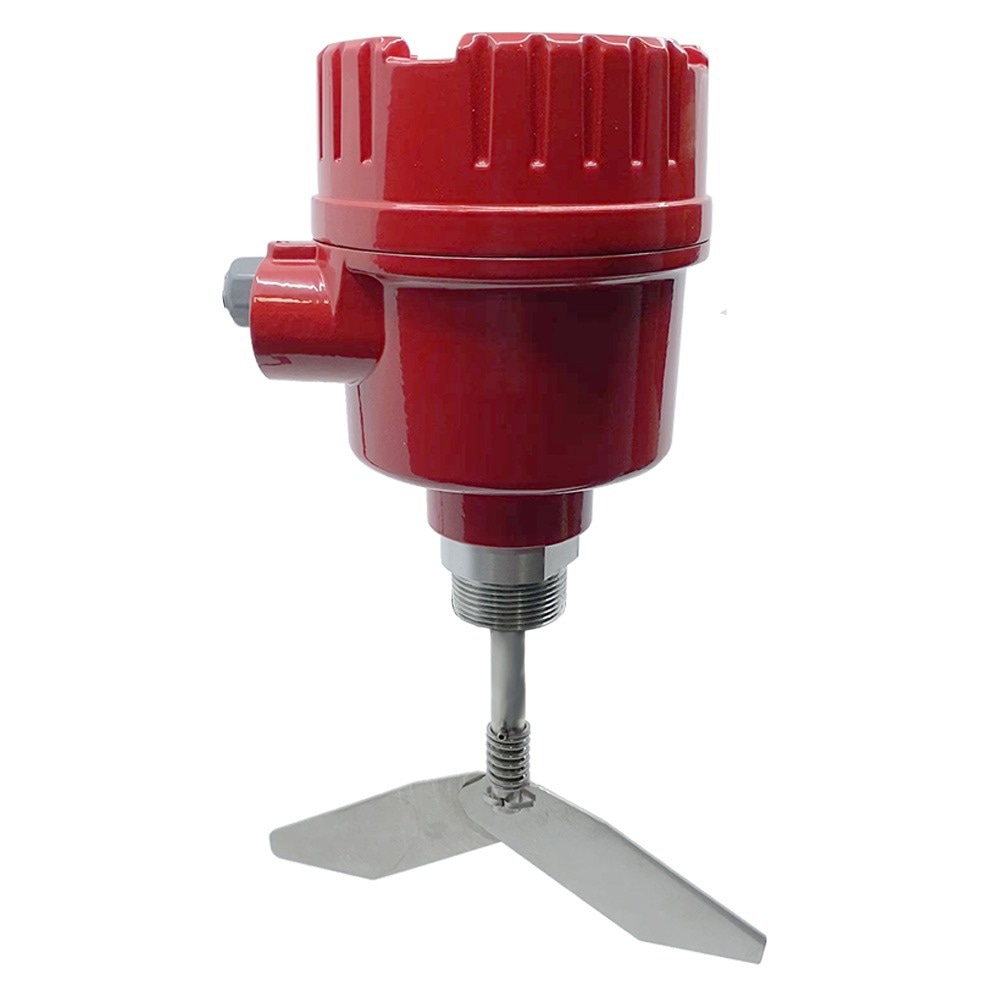The new BinMaster BMRX-100 rotary level indicator is an electromechanical device used in solids and powders to prevent bin overfills, dry runs, or to shut off a process. The BMRX-100 has no printed circuit board, so it’s impervious to moisture and vibration found in many tough processing environments.

Image Credit: BinMaster
By alerting to full and empty vessel conditions, it prevents waste and saves time when handling bulk materials stored in bins and silos. It’s designed for materials with a bulk density of 2 lb. to over 100 lb./cu. ft. for use in ordinary storage and processing conditions.
BinMaster’s engineering team designed the new red enclosure to rotate once installed. This unique feature makes it easy to ensure conduit entries are always pointed toward the ground, mitigating the risk of moisture damaging internal components. The “conduits down” feature makes proper installation simple and leads to a long service life. Another new rotary feature incorporates a wire guide that ensures wires don’t get stuck as you push them through conduit entries.

Image Credit: BinMaster
Use the BMRX-100 for process control, by wiring it to a light or horn to alert status has changed from uncovered to covered or vice versa. This bin indicator can alert to high levels to prevent spills. Or mount it low in the bin to know when it’s almost empty to prevent batching errors and dry runs. Use it to detect overloaded or empty conveyors, or let you know when a chute gets clogged with material.
The BMRX-100 power pac sells for under $300 and is available on the BinMaster website or from a local distributor. Order it with optional process connections if the level sensor is used in corrosive or caustic material. Plus, find a selection of 19 steel and plastic paddles suitable for light to heavy materials. Popular collapsible paddles simplify installation since no bin entry is required. It can also be used as a top-mounted level detector when custom-ordered with galvanized or stainless-steel extensions.
The BMRX-100 is adaptable to light, medium or heavy materials. Grain, seed, feed, fertilizer are common uses in agriculture. Construction industry uses include concrete and cement batch plants and silos of roofing granules. Mining applications include sand, gravel, aggregate, coal storage and surge bins. Or detect the level of resin pellets in silos or hoppers in the plastics industry. It’s versatile for other bulk solids like wood pellets, chemicals, and foodstuffs.